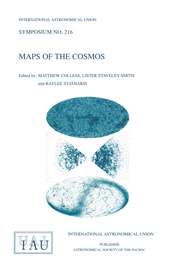Article contents
The transverse motions of the sources of solar radio bursts
Published online by Cambridge University Press: 14 August 2015
Extract
Observations of the spectrum of solar radio bursts at meter wavelengths have indicated the desirability of measuring positions on the sun's disk not only as a function of time but also as a function of frequency. With this objective in view, we are now using a swept-frequency interferometer to determine the east-west disk coordinate of the transient solar sources at time intervals of ½ second and freqency intervals of about 5 Mc/s within the frequency range 40 to 70 Mc/s. The accuracy to which the centroid of the source is located is about ±1 minute of arc. In its initial form [1], the interferometer contained two aerials separated by a distance of 1 km. As a result of preliminary tests, two major additions have been made: (1) a second interferometer of much smaller spacing (¼ km) has been added to resolve the usual ambiguities associated with two-aerial interferometry, and (2) an automatic system of lobe-switching and phase-calibration has been incorporated to facilitate the reduction of the complex data recorded.
- Type
- Part II: The Sun
- Information
- Symposium - International Astronomical Union , Volume 9: Paris Symposium on Radio Astronomy , 1959 , pp. 176 - 185
- Copyright
- Copyright © Stanford University Press 1959
References
- 24
- Cited by


